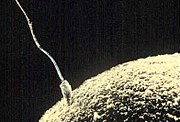
My sister's husband has a passion for Nutella. When Ferrero put out a 40th-anniversary Nutella jar* of woolly mammoth** proportions, Christian bought one and actually spooned his way through it. Not in one sitting, admittedly, but still.
I love my brother-in-law dearly, so when he and my sister came to dinner a few weeks ago, I thought I'd treat them to Nutella ice cream for dessert. I considered going the classic ice cream route, starting with a custard base to which I'd add Nutella, but I was feeling under the weather and this was more work than I wanted to tackle.
Instead, I used a much easier, much more straightforward formula: equal weights of Nutella and unsweetened evaporated milk (lait concentré non sucré), combined and churned into the creamiest, most indulgent concoction ever to emerge from my ice cream machine.
This first attempt was wildly successful (and I do mean "I would marry you if I hadn't already married your sister" successful) yet two problems remained: 1- although the French version of Nutella contains no transfats, it still leaves much to be desired on the nutritional front, and 2- the one-to-one ratio resulted in an ice cream that was, in my opinion, sweeter than strictly necessary.
It took little brainjuice to figure out a solution: replace the Nutella with an all-natural, organic equivalent, and use less of it.
My organic store stocks several brands and variaties of chocolate hazelnut spread, involving different proportions of hazelnuts and chocolate. After studying the labels for a while, I set my heart on Jean Hervé's Chocolade, for three reasons: I'm already addicted to his stone-ground nut butters, a portion of the company's sales is donated to a charity that builds schools in Madagascar, and the guy has a ponytail.
As the obligatory spoon test revealed***, this Not-ella is less sweet than its world-renowned cousin, and less eerily smooth, too. It would be unfair to describe the texture as grainy -- it is not -- but the tongue senses and aknowledges that real hazelnuts have given their lives for the cause.
And I'm happy to report that, when enrolled in this ice cream project of mine, La Chocolade performed to the complete satisfaction of all who had a chance to taste it before the tub mysteriously emptied. The ice cream was most often paired with the best sablés in the galaxy (I'm serious): Poilâne's punition cookies, which now come in an adorable spoon shape to serve with coffee, or, for a limited time only and until the Saint-Valentin crap finally boils over, in a heart shape.
~~~
* I believe this collector's item weighed in at 5 kilos (~11 pounds).
** Did you know woolly mammoths had a flap of hairy skin over their anus to keep out the cold? Can you think of a more endearing feature? or a more appropriate topic to discuss with your V-Day date?
*** The spoon test should be conducted as follows: take spoonful, place on tongue, close mouth, draw spoon out, close eyes, swish, chew, swallow.
Super Simple Nutella Ice Cream
- 350 grams (= 12 1/3 ounces = 1 1/2 cups = 360 ml) store-bought chocolate hazelnut spread, preferably all-natural and organic
- 410 grams (= 14 1/2 ounces = 1 1/2 cups + 1 tablespoon = 380 ml) unsweetened evaporated milk (a.k.a. unsweetened condensed milk or lait concentré non sucré; I used reduced fat)
Makes about 750 ml (3/4 quart).
Pre-freeze the bowl of your ice cream maker according to the manufacturer's instructions.
Combine the chocolate hazelnut spread and the evaporated milk in a medium mixing bowl, and stir with a whisk until they become one, voluptuous and smooth. Depending on the texture of the spread you're using, this may take a few minutes; don't get discouraged. (To speed things up, you may use a blender/stick blender/stand mixer, or gently heat the evaporated milk beforehand.)
Cover and refrigerate until well chilled. Whisk again and churn in your ice cream maker.
If you don't have an ice cream maker, you can still make this recipe on a day when you're home most of the time. Prepare the mixture in the morning and chill for two hours. Pour into a freezer-safe container and place in the freezer. Every hour or so, remove the container from the freezer, draw the sides in with a fork (the ice cream will set on the sides first), stir vigorously, and return to the freezer. Your ice cream will be ready by dinnertime.
The only problem with that method -- besides requiring a little elbow grease -- is that the ice cream becomes quite solid the next day. Just take it out of the freezer for 15 minutes to soften before you scoop some out.















